In the years after WWII, the western navies faced a crisis. The Soviets were believed to be building a massive submarine fleet, and the weapons that the US and Britain had developed to fight the U-boats would be ineffective against the faster, deeper-diving submarines derived from the German Type XXI. One obvious solution was nuclear weapons. They would certainly be useful to attack the submarine's bases, but they also offered a weapon with a lethal radius large enough to allow attacks on fast submarines despite the inevitable lag between acquiring the target and getting the weapon in position for the attack. Of course, there were drawbacks, too. Any nuclear depth bomb (NDB) would blank out sonars and threaten any nearby ships, as well as spreading radioactive contamination. As a result, no NDB was ever deployed directly from a surface ship.
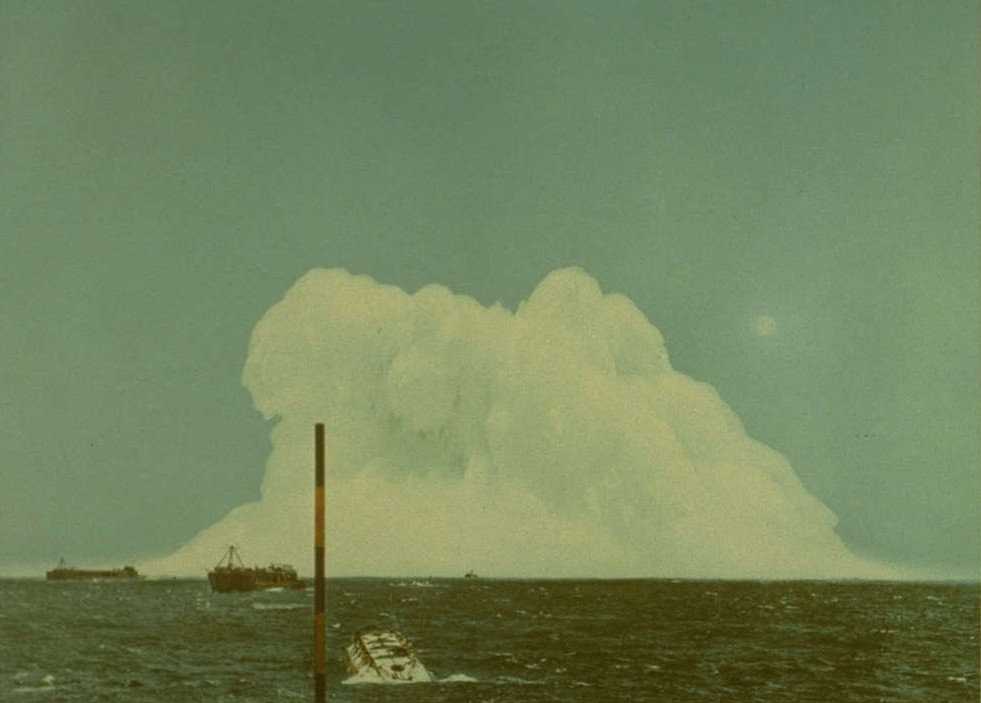
The Wigwam test
The first ASW nuclear weapon was a variant of the Mk 7 that had first given tactical aircraft a nuclear strike capability, known as the Mk 90 BETTY. Work on this design began in 1952, producing a parachute-retarded weapon with a yield of 32 kT, intended to be capable of being delivered by airplane or blimp.1 There was still a great deal of uncertainty about weapon effects in deep water, so in mid-1955, a test designated Wigwam was conducted using a Mk 7 warhead about 500 miles southwest of San Diego. It proved that a typical submarine within about 1.3 miles of the blast would be destroyed, and the BETTY began entering service later that year. There were three fuzing options: impact (with the seabed), hydrostatic (set depth) and time. It was fitted to carrier aircraft including the F7F Tigercat, AD Skyraider and S2F Tracker, as well as land-based planes like the P5M Marlin and P2V Neptune.
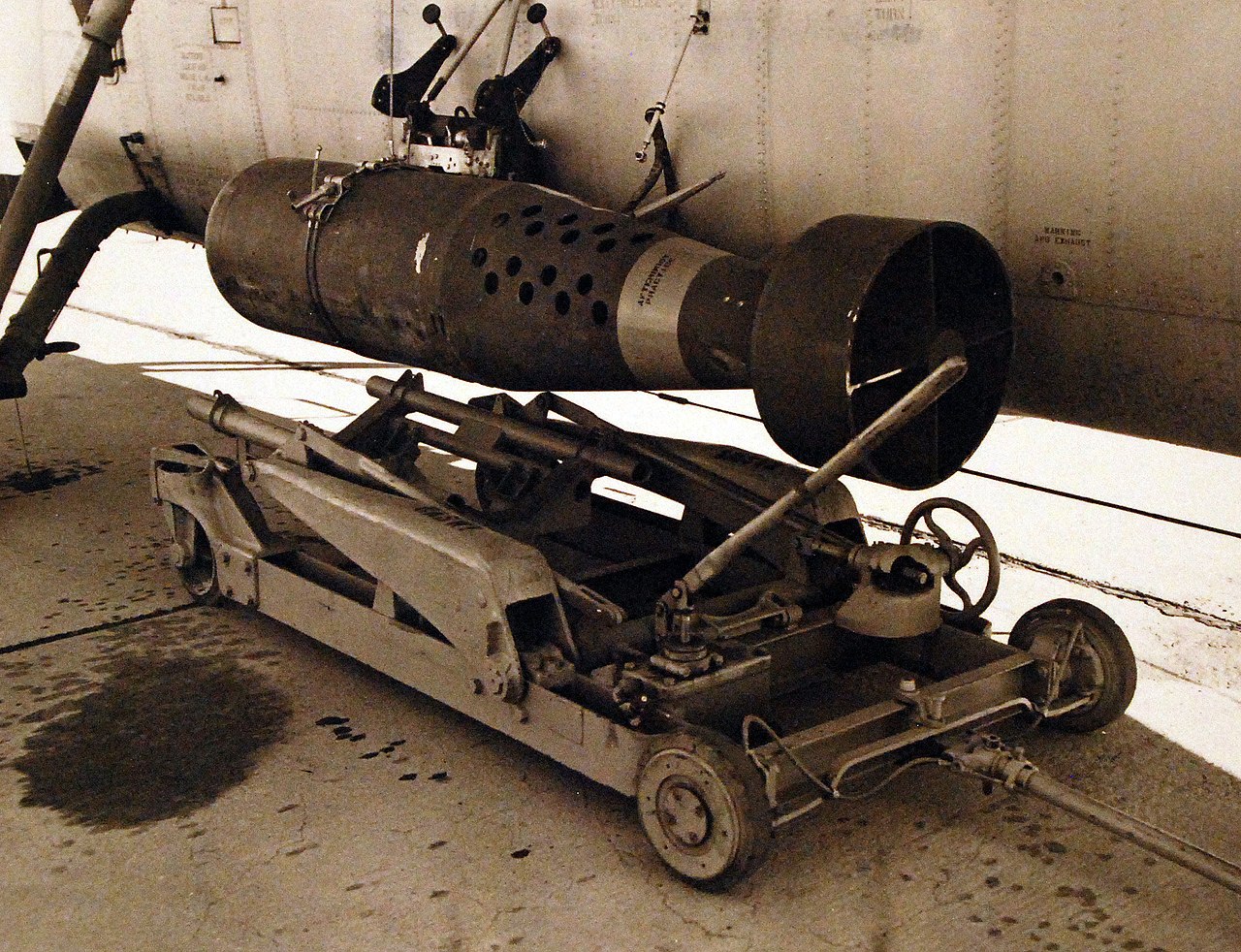
Mk 101 LULU on a bomb cart
Even as BETTY was entering service, plans were being made for a smaller, lighter weapon to replace it, using a boosted warhead. One of the main drawbacks of the 2,000 lb BETTY was that it was too heavy for use by helicopters or even most tactical aircraft. Also, the parachute required to slow it before impact increased "dead time" between the weapon being launched and detonating, raising the chances of the submarine getting away. The new weapon, the Mk 101 LULU, would use the same W34 warhead as the Mk 105 HOTPOINT laydown bomb,2 allowing it to eschew the parachute. LULU weighed only 1,200 lb, and had a yield of 11 kT, allowing a much wider range of delivery platforms. To check the safety of these delivery platforms, a helicopter and two blimps were used during several shots of Operation Plumbbob, with one of the blimps being destroyed as a result.3 LULU replaced BETTY from 1960 onwards, remaining in service for a decade until it was replaced in turn by the B57, a multi-mode conventional bomb/NDB that would see out the Cold War.4
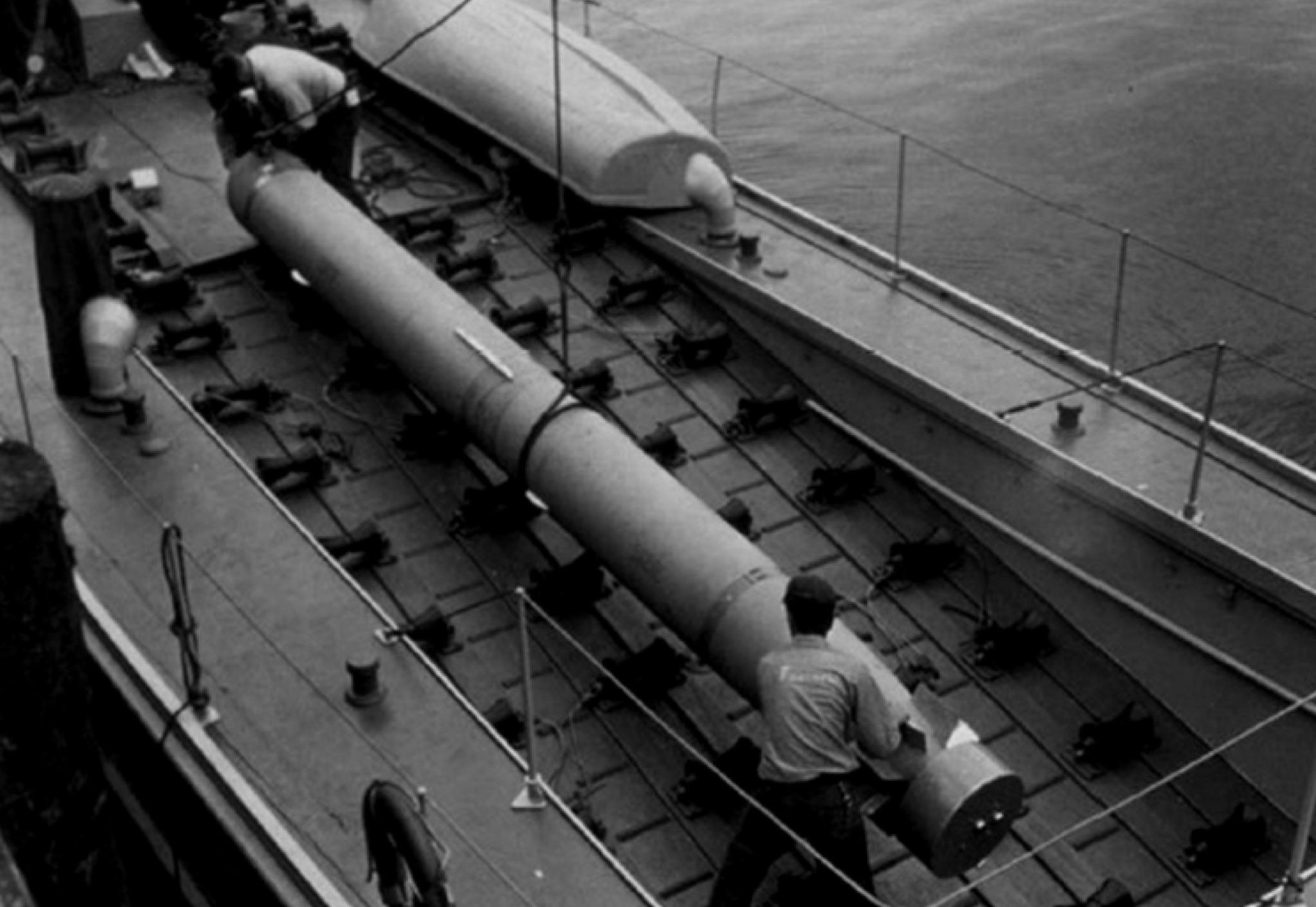
Mk 45 ASTOR being loaded aboard a submarine
The W34 was also used for the first alternative ASW nuclear weapon, the infamous Mk 45 ASTOR torpedo. In the late 50s, it was not possible to build a torpedo capable of homing on a target while traveling at high speed, an obvious problem when shooting at a fast (probably nuclear) submarine. One option was to wire-guide the torpedo based on information from the launching submarine, but while this could get it reasonably close to the target, it wasn't accurate enough to bring it within the lethal radius of a conventional torpedo. Project Nobska, a 1956 conference on anti-submarine warfare more famous for recommending the development of Polaris, suggested that a nuclear warhead was the ideal way to solve this problem, and ASTOR entered service only three years later. ASTOR was a battery-powered 40-kt torpedo with a range of about 6 miles for early versions and 10 miles for the final model, unique among torpedoes in having neither onboard guidance nor any form of impact or proximity fuze. To satisfy requirements for positive control of nuclear weapons, it was steered and detonated entirely by command from the launching submarine.
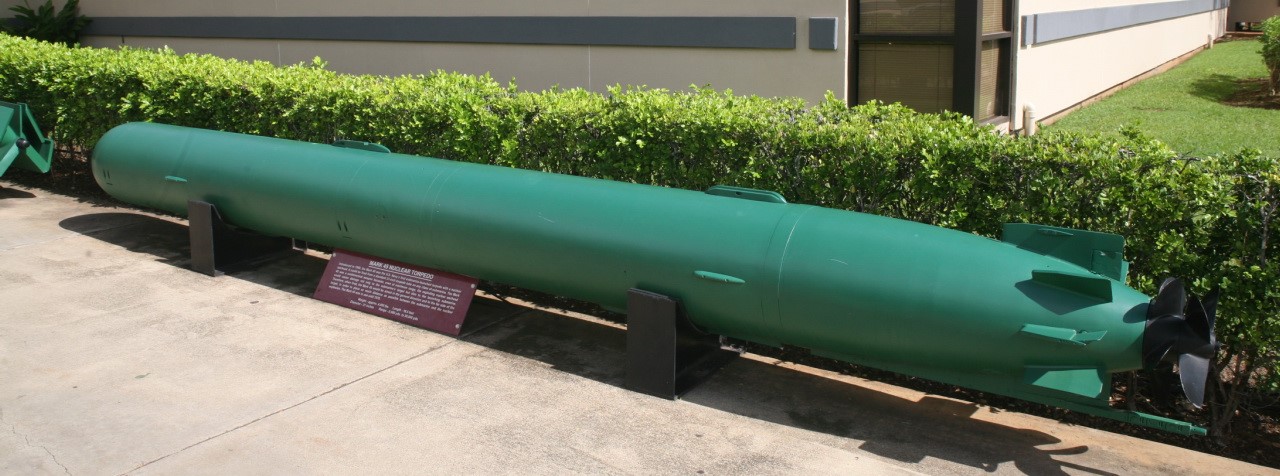
A Mk 45 ASTOR on display
In service, ASTOR was tremendously unpopular. It was widely known as "the only weapon with a Pk5 of 2", suggesting that both the launching submarine and the target would be destroyed. This was not, in fact, true, as the more powerful BETTY (32 kT vs 11 kT for ASTOR) had a lethal radius of just over a mile, significantly lower than ASTOR's range.6 On a more practical level, the procedural and administrative headaches of hauling around nuclear weapons were non-trivial,7 and most sources claim that it required the launching submarine to find the range with active sonar, which didn't endear it to the stealth-focused submarine force.8 Few were sorry to see ASTOR go in the mid-70s, when it was replaced by the Mk 48, capable of homing at high speed, and incidentally becoming the first US nuclear weapon withdrawn in favor of a conventional system.9 The weapons were refitted with conventional warheads and homing systems and offered as "Freedom Torpedoes" to US allies, without any success.10
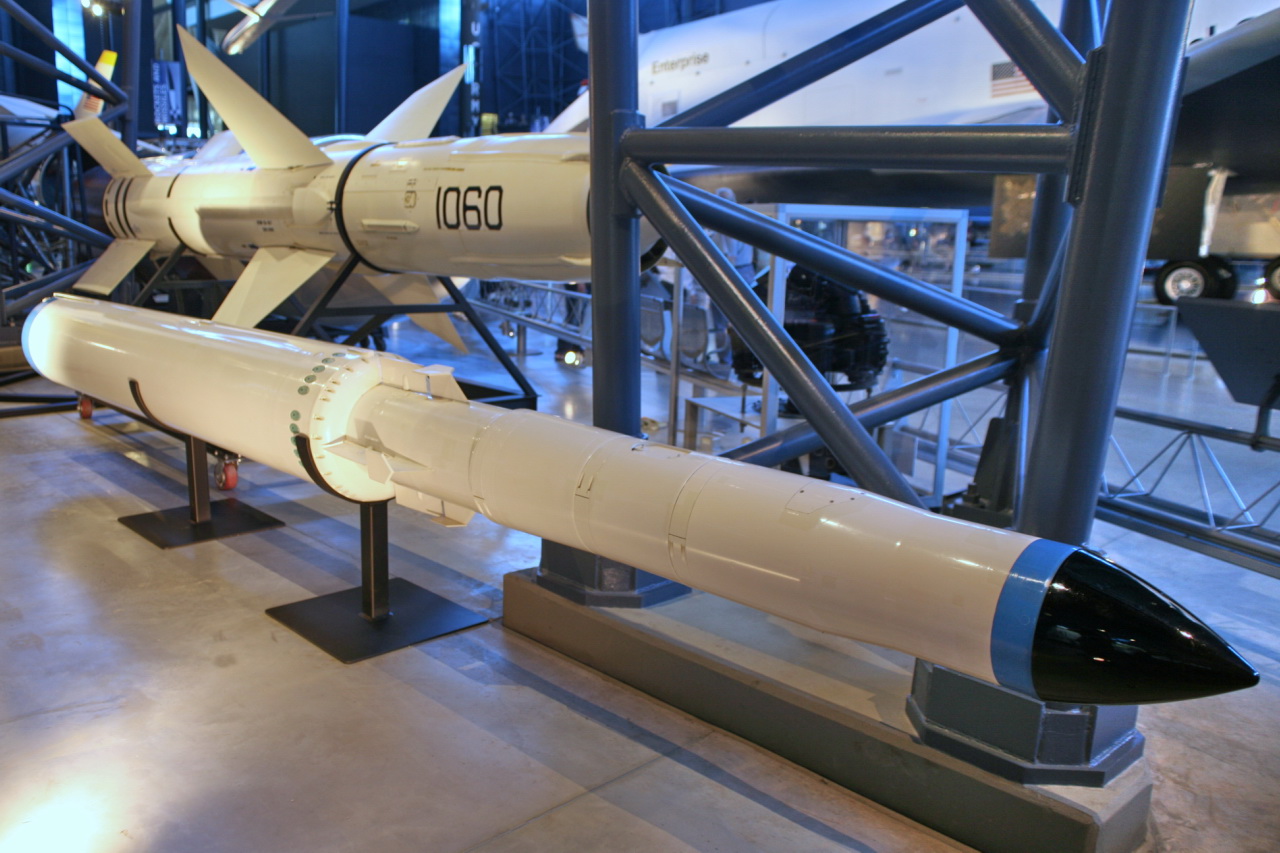
SUBROC
Nor was ASTOR the only nuclear ASW weapon inflicted on the submarine force in the late 50s and early 60s. The idea behind SUBROC (SUBmarine ROCket) originated with a plan to fit a nuclear warhead to a rocket that could be fired from a 21" torpedo tube and used to attack land targets without forcing the submarine to surface, a capability eventually achieved with Tomahawk. Project Nobska suggested the development of a rocket capable of delivering a nuclear depth bomb out to a range of about 35 miles, which corresponded with the first convergence zone.11 The 200 kT W55 warhead was designed to have a lethal radius of around 2.5 miles, to be able to kill any target in the 5-mile wide convergence zone. SUBROC survived until 1988, thanks to its status as the only standoff weapon available to the submarine force. It was extremely unpopular, due to issues with storing radioactive warheads in the torpedo room, in close proximity to the crew,12 and thanks to the requirement for using active sonar. Throughout its service life, SUBROC also had a secondary airburst mode for land attack. There were discussions about building a version with a conventional homing torpedo, but it was thought that any hostile submarine would hear the rocket leaving the water and evade.
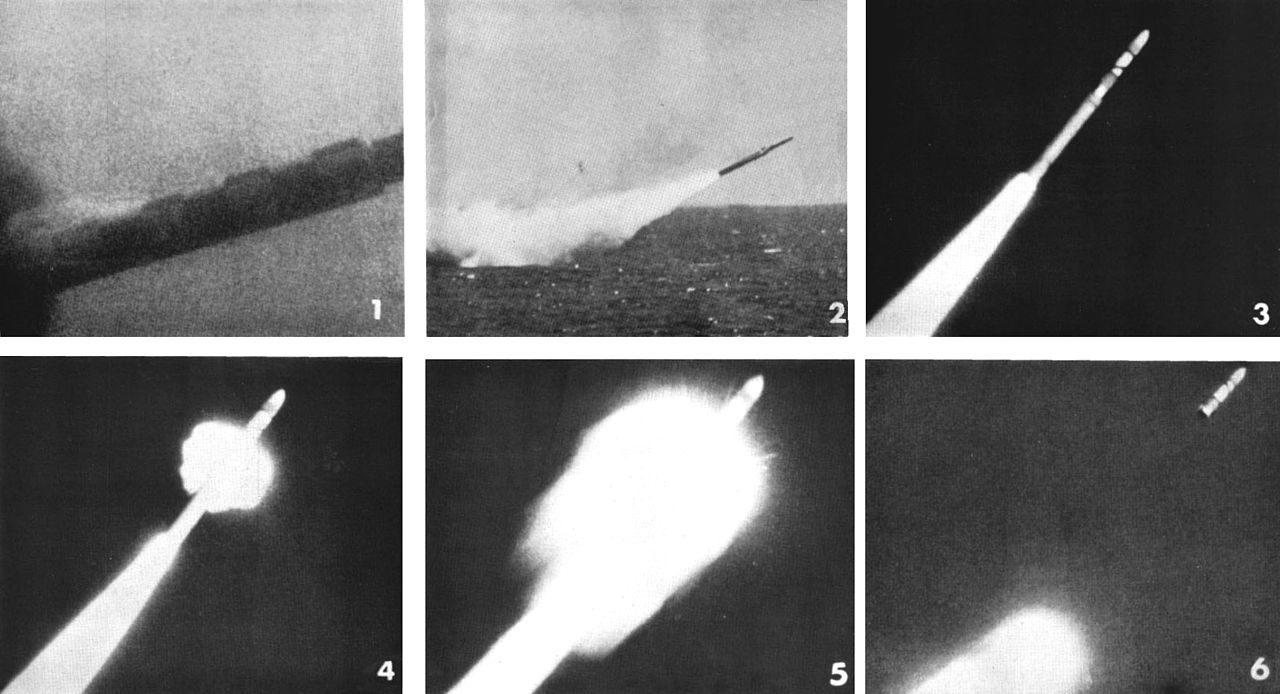
The SUBROC launch sequence
But there's one important piece of the nuclear ASW picture I've left out, that of the surface fleet. We'll pick up our story there next time.
1 No, this is not a joke. The USN maintained an active blimp program until the early 1960s, focusing on ASW, which I will talk about at some point. ⇑
2 HOTPOINT apparently also had a secondary depth bomb mode, although I don't have confirmation that it had a hydrostatic fuze. I suspect it was limited to shallow depths, and that it may well have been intended to replace the Mk 8 in the "go off in the water near the target" role. ⇑
3 LULU was considered to have a secondary anti-shipping role, essentially replicating the Baker shot from Operation Crossroads. It also had an impact fuze, which would set it off if it hit the bottom at less than 750'. ⇑
4 Both LULU and the B57 were also supplied under dual-key arrangements to NATO allies for use on their maritime patrol aircraft. ⇑
5 Probability of kill. ⇑
6 The initial version didn't have a minimum enabling range, while later ones enabled at 2,050 yd, probably far enough to keep the launching submarine reasonably safe. ⇑
7 This was not isolated to the submarine force, or to ASTOR. From everything I've heard, the only platforms that didn't really mind carrying nuclear weapons were the carriers. Everyone else, submarine and surface ship, would rather they didn't have to bother with the things. ⇑
8 As you might expect from my wording, I have reason to doubt this. Most of the sources that agree are from the nuclear weapons side, and the naval sources do not indicate that this was a requirement. Norman Polmar in Ship Killers doesn't mention this requirement, although he does bring it up for SUBROC, contrasting that with ASTOR. Friedman's US Submarines Since 1945 mentions the use of PUFFS, a passive rangefinder using sensors spaced along the hull, for ASTOR, and says that this allowed them to discard plans for a small (500 yd range) pinger integrated with ASTOR. ⇑
9 Weirdly, there have been occasional attempts since then to reintroduce nuclear torpedoes, usually via "insertable" warheads which could somehow be fitted to existing Mk 48 torpedoes. The stated rationale is concern over the ability of existing warheads to kill heavily-built Soviet/Russian submarines, and to allow torpedoes to ignore countermeasures via proximity detonation. Personally, I don't find the arguments particularly convincing. ⇑
10 One last fun fact about ASTOR: two were lost aboard the submarine Scorpion in 1968, and remain on the bottom of the Atlantic today. ⇑
11 Underwater acoustics are fantastically complicated, and I've given the full version elsewhere. The short version is that in deep water, there are predictable intervals when sound is focused back towards the surface, making it much easier to detect targets at those specific ranges. These are called "convergence zones", and the first usually is about 35 miles out, with further ones at multiples of that range. ⇑

Comments
I mean, look, we've all been at that staff meeting...
@cassander, True. Nuclear weapons are regularly brought up as a solution to all sorts of problems. And I'm not even working in the military.
What were they thinking?
You can't call it a "freedom torpedo" without the nuke. That's like selling people unsalted freedom fries.
Weirdly, I don't think nukes ever come up in our staff meetings. At least not as jokes.
@echo
I'm rather glad we didn't export nukes to Turkey (the country that came closest to buying the things).
Do you know why there were both hydrostatic and time options? Naively, I'd expect that a timed fuse and a hydrostatic fuse would be substitutes for one another.
That is a good question, and I don't really know. If I had to guess, I'd say that the timed fuze might have been for a secondary land-attack role, replacing the Mk 8.
Having two different fuses would be pretty cheap in the grand scheme of things (the warhead is really expensive) and provide a significant increase in flexibility so why not?